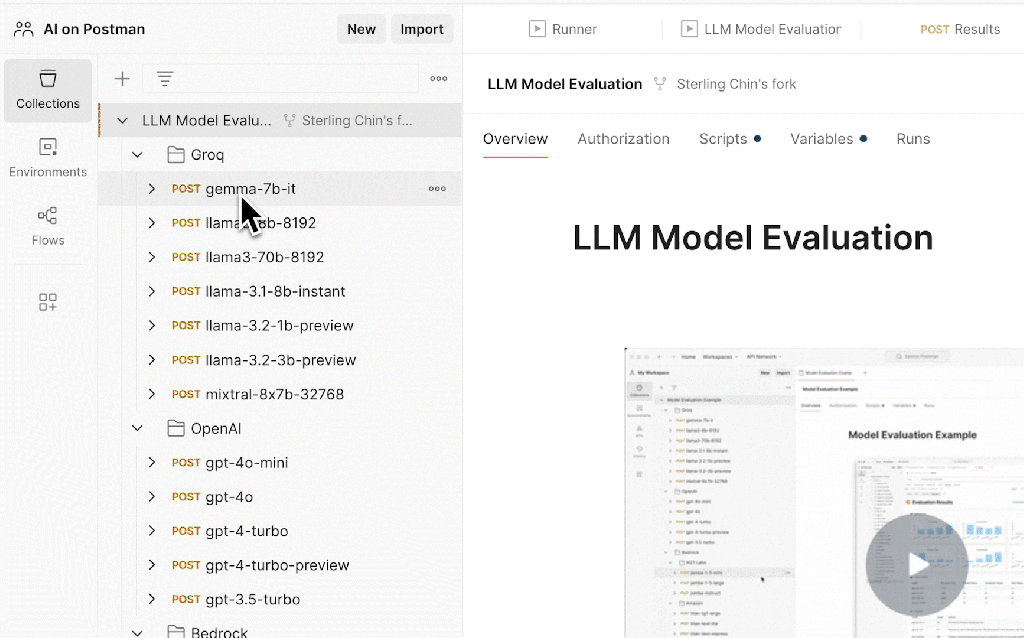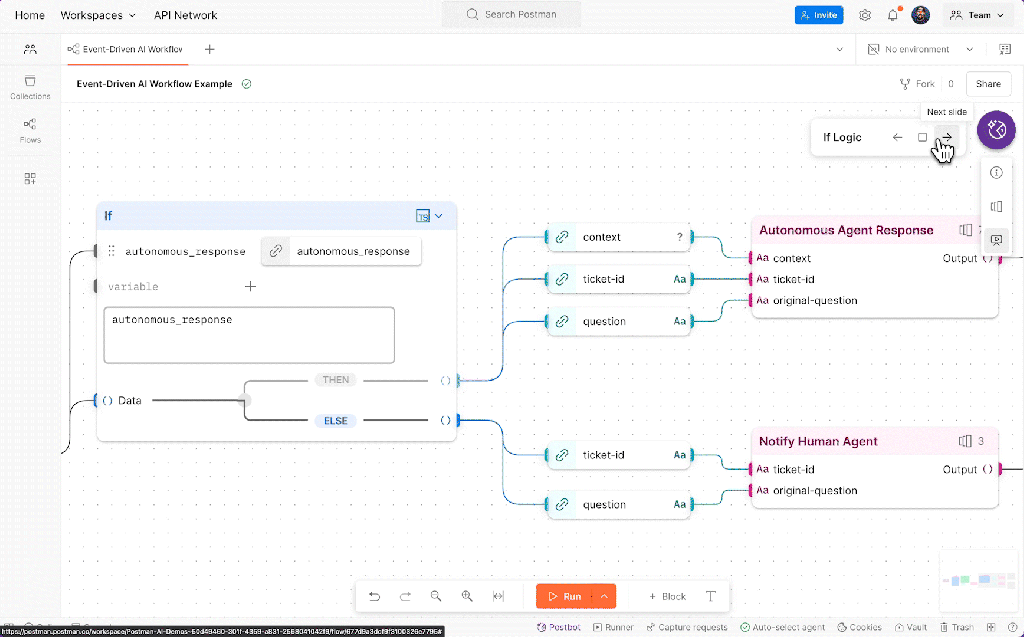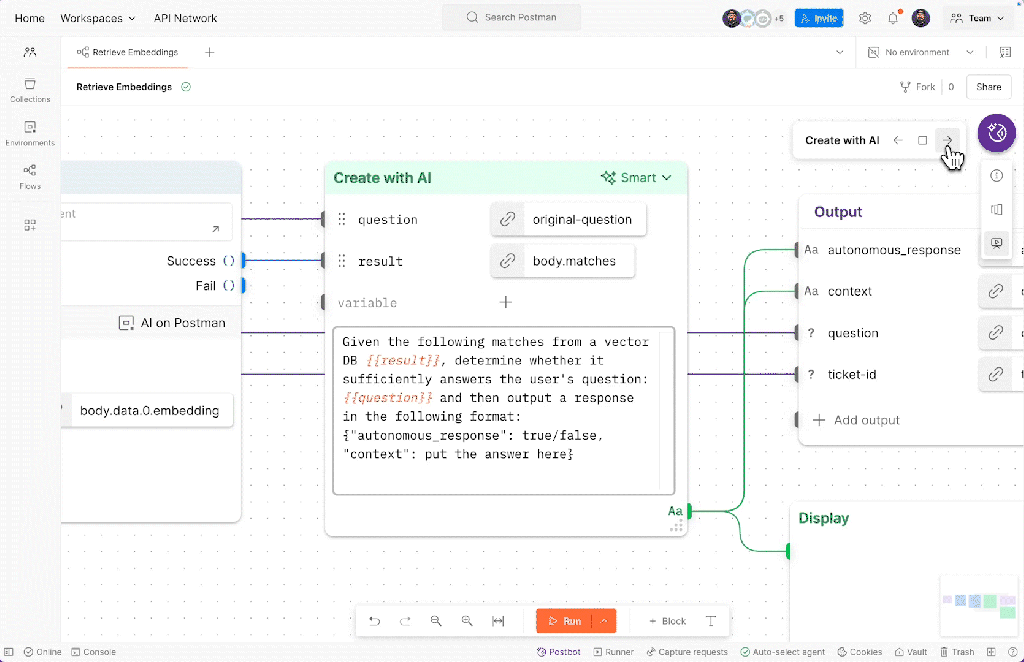
Postman
Postman’s Agent Builder uses the platform’s Flows visual programming interface to create multi-step workflows that integrate both API requests and AI interactions—no extensive coding required. With full integration of the new Postman AI protocol, developers can embed LLMs into their automation sequences to enable dynamic, adaptive, and intelligence-driven processes. For example, AI requests can enrich workflows with real-time data, make context-aware decisions, and discover relevant tools to address business needs. Flows also includes low-code building blocks for conditional logic, scripting capabilities for custom scenarios, and built-in data visualization and reporting, enabling teams to quickly tailor workflows to specific business requirements, reduce development overhead, and deliver actionable insights faster.

Postman
This Agent Builder approach supports rapid experimentation, local testing, and debugging, effectively fitting into a developer’s “inner loop.” Collaboration features allow teams to label and section workflows, making it easier to share and explain complex automations with colleagues or stakeholders. For multi-service workflows, developers can confirm each step under realistic conditions using scenarios to ensure consistency and reliability well before final deployment. Scenarios can be versioned and shared, streamlining the process of testing and evaluating agents built with Flows.

Postman
Postman’s API Discovery and Tool Generation capabilities add the ability to find and integrate the right APIs to use with AI agents. By leveraging Postman’s network of more than 100,000 public APIs, developers can automatically generate “agent tools,” removing the need to manually write wrappers or boilerplate code for those APIs. This scaffolding step includes specifying which agent framework (e.g., Node.js, Python, Java) and which target LLM service or library the agent will use, even if official SDKs don’t exist yet. As a result, teams can focus on core workflow logic rather than wrestling with setup details.









